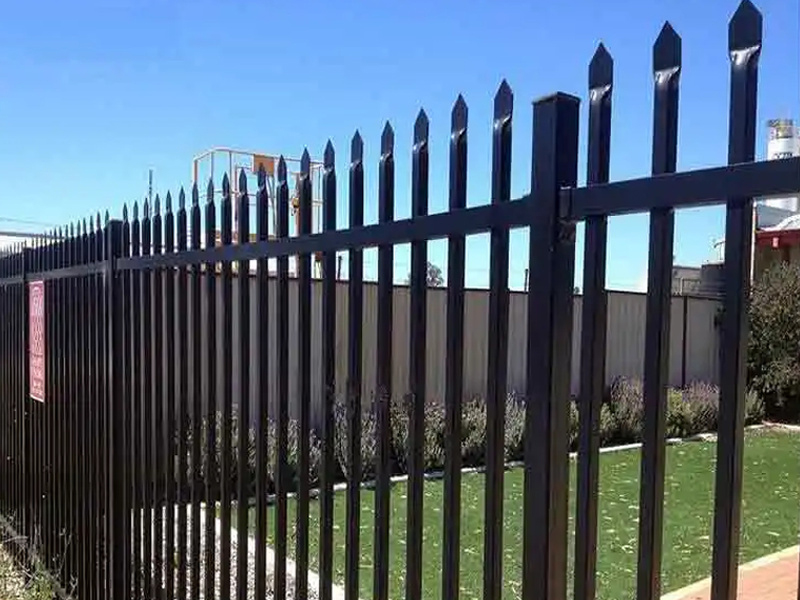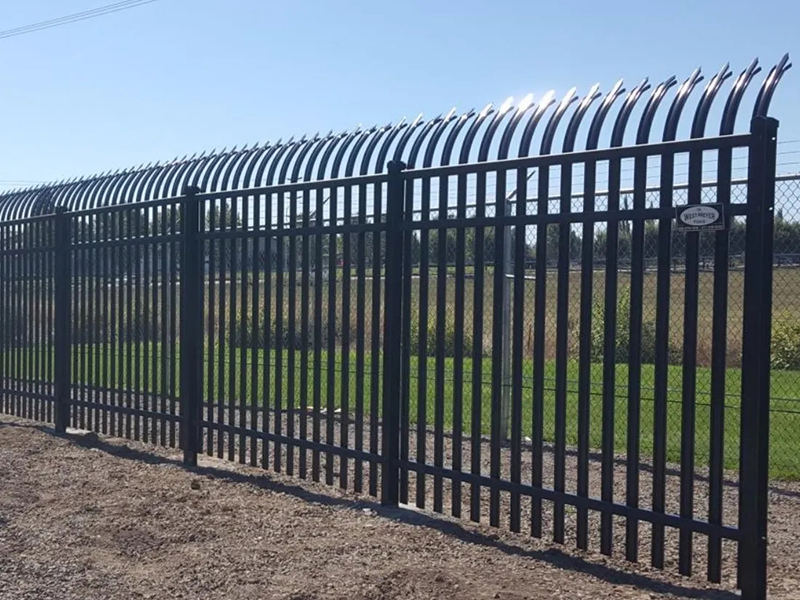Stay up-to-date on the latest in local and national government and political topics with our newsletter.
The Bismarck-Mandan Rail Bridge spans the Missouri River between the two cities. Heavy Duty Mesh Panels

North Dakota’s Department of Water Resources has issued two state permits that are the last regulatory permissions BNSF Railway needs to replace the Bismarck-Mandan Rail Bridge over the Missouri River between the two cities.
The decision comes over the objections of a local citizens group that has indicated it might sue over the project. Friends of the Rail Bridge President Mark Zimmerman said the group is disappointed with the state’s decision, and FORB’s attorney is reviewing it.
“We could certainly look at a challenge in court,” he said, adding that the group “stands firm” on issues including its belief that the state owns the bridge.
Water Resources for months has been considering whether to issue two sovereign lands permits — one for construction of a new bridge, and one for removal of the old. Sovereign lands of North Dakota are defined as areas lying within the ordinary high-water marks of navigable lakes and streams.
Water Resources held hearings on each permit earlier this year. They drew extensive testimony from members of the Friends of the Rail Bridge nonprofit, who touted the bridge’s historical, cultural and aesthetic attributes and listed what they said were legal reasons for keeping the 140-year-old bridge.
The railroad maintains that the aging bridge needs to be replaced with a modern structure for safety and efficiency reasons. The U.S. Coast Guard after a nearly three-year environmental review of the BNSF plan concluded the bridge “is approaching the end of its useful life and needs to be replaced.”
BNSF has secured nearly all of the approvals it needs to build a new structure and remove the old. They include permits from the U.S. Coast Guard and U.S. Army Corps of Engineers, a North Dakota Department of Environmental Quality water quality certification, and an agreement with the Bismarck City Commission giving the railroad the right to access certain portions of city property and to obtain soil from the land.
The Department of Water Resources on Monday issued a statement that said it had approved the sovereign land permits but didn’t indicate the specific factors in the decision. Spokesman Lee Greuel told the Tribune that the agency “reviewed all application materials, project designs, supporting information, and comments on the project during the review process.”
Railroad spokeswoman Amy McBeth in a statement to the Tribune said: “BNSF has obtained all the permits and approvals for our bridge project to begin construction. This is a massive private infrastructure project benefitting North Dakota’s major industries as well as the nation’s supply chain. Construction activity will ramp up this spring and summer as we build a railroad bridge capable of serving our customers for the next 100 years.”
The bridge is part of the congressionally designated Northern Plains National Heritage Area and is eligible for inclusion on the National Register of Historic Places. The preservation group envisions a pedestrian bridge tourism attraction but hasn’t said how it would be funded. A 2019 feasibility study conducted by North Dakota State University estimated the cost at just under $7 million.
FORB has said the question of who owns the bridge has stopped private foundations from committing. The group believes the bridge is state property and that it could not be removed without approval from the State Historical Board. The board in March passed a resolution expressing support for preserving the bridge but noting that it does not have authority or expertise to determine ownership.
Attorney General Drew Wrigley in March informed the board that he does not believe it has the authority under state law to stop demolition of the bridge because the structure “has always been owned privately.”
BNSF has called FORB’s state-ownership argument “legally absurd.” The railroad maintains it hold clears title to the bridge.
Federal officials determined the best alternative is to build a new bridge about 20 feet upstream and remove the existing bridge. Side-by-side bridges in the river channel would result in a floodplain rise, according to the Coast Guard.
FORB has said it does not oppose a new bridge, as long the existing one is maintained. Members believe a studied-but-rejected alternative — building a new structure 92.5 feet upstream — would have been feasible. The railroad disputes that, saying financial, logistical and environmental reasons precluded that option.
FORB previously indicated it’s considering a lawsuit to try to save the existing bridge but said it needed to first exhaust its potential administrative remedies, including seeking rejection of the sovereign lands permits.
The permits issued by Water Resources are subject to several conditions. They include, among others:
The permits also state that the railroad must comply with the conditions set forth in the Department of Environmental Quality’s water quality certification.
The federal government delegates authority to states and tribes under the Clean Water Act to protect the quality of federally regulated waters within their borders. DEQ in December concluded that the removal of the existing rail bridge and construction of a modern structure will comply with state water quality standards.
The DEQ certification includes several conditions ranging from removal of dredged material and debris to having emergency response equipment on hand. It also bars BNSF from using explosives to remove the existing bridge.
The Water Resources permit for bridge removal has detailed language on how the work can be conducted so that parts are available “for either salvage or disposal.”
The railroad has said dismantling the bridge rather than blowing it up will ensure that pieces of it can be retained if any groups wish to use them for historic preservation projects. The existing bridge will not be removed until the new bridge is in operation.
Crews have started preliminary work on the project.
“Tree removal has already begun. We’ll conduct more prep work, such as mobilizing material and equipment and improving access to the site,” McBeth said. “Later this spring we anticipate hauling fill material to start building the embankment for the new bridge west and north of the existing structure.
“We estimate the cost of the project is now approximately $100 million, which has increased $40 million since we started the federal permitting process in earnest over five years ago,” she said.
Reach News Editor Blake Nicholson at 701-250-8266 or blake.nicholson@bismarcktribune.com.
Stay up-to-date on the latest in local and national government and political topics with our newsletter.
Email notifications are only sent once a day, and only if there are new matching items.
A group hoping to save the 140-year-old Bismarck-Mandan Rail Bridge accused BNSF Railway on Friday of being unreasonable and arrogant, and of …
A citizen group trying to save the 140-year-old Bismarck-Mandan Rail Bridge argued on Friday against a state permit that’s one of the last app…
North Dakota regulators on Monday issued a water quality certification necessary for BNSF Railway’s plans to build a new bridge over the Misso…
The building of an access road to support construction of a new BNSF Railway bridge across the Missouri River between Bismarck and Mandan wil…
A judge has dismissed a citizen group's appeal of state permits that cleared the way for BNSF Railway to begin replacing the Bismarck-Mandan R…
A citizen group that has strived for years to try to save the Bismarck-Mandan Rail Bridge is taking its battle to the North Dakota Supreme Cou…
North Dakota Supreme Court justices will hear arguments Monday over whether state officials erred in allowing the pending replacement of the 1…
The Bismarck-Mandan Rail Bridge spans the Missouri River between the two cities.

High Tensile Barbed Wire Get up-to-the-minute news sent straight to your device.